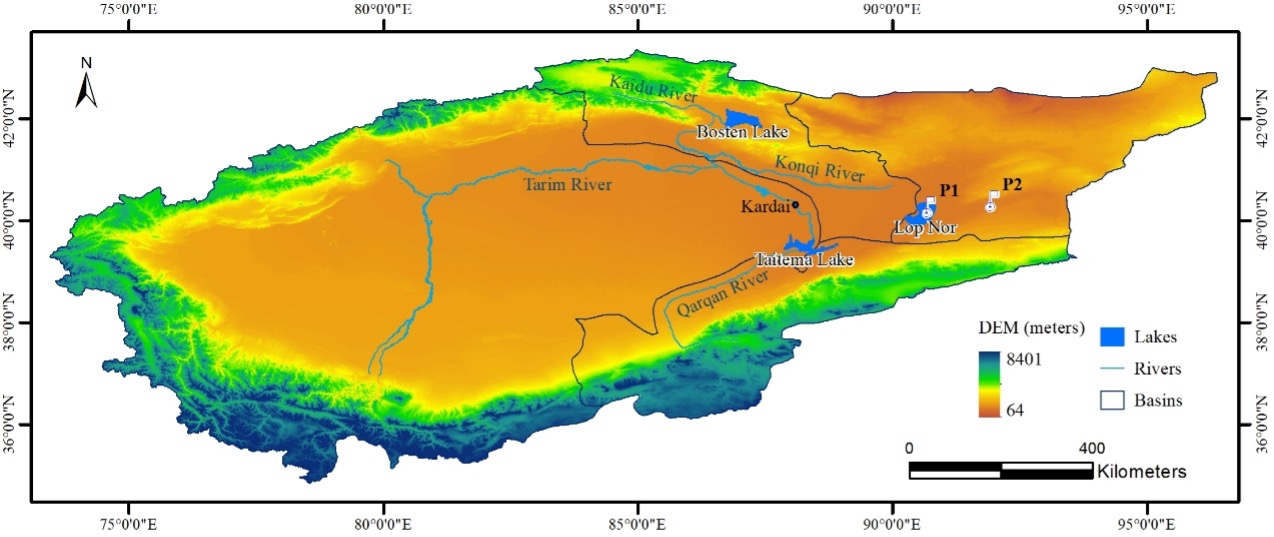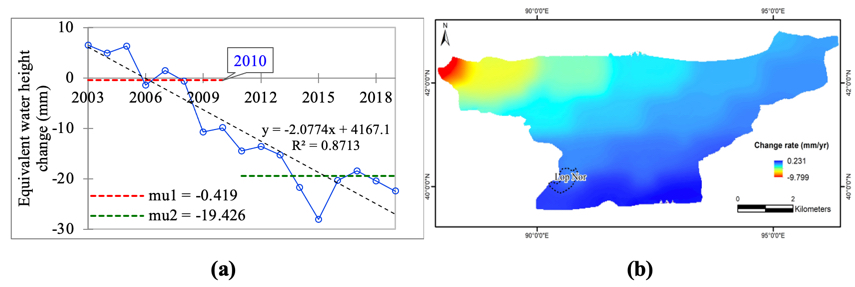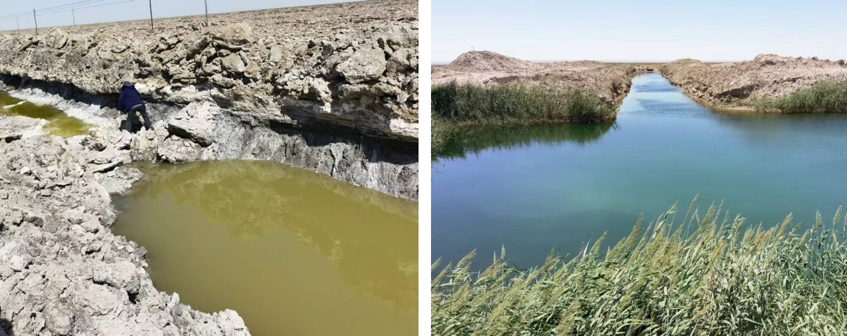Study Sheds Light on Rebirth Code of Lop Nur
Protecting and restoring the degraded arid lakes are globally urgent issues. Lop Nur, known as the "Sea of Death", is located in the Tarim River basin, the largest inland basin in China, and is one of the four unmanned areas in China.
On November 3, 2022, Scientific Reports published a research paper entitled "Active water management brings reliability restore to degraded lakes in dry regions: a case study of Lop Nur, China", which introduced the scientific discovery of rebirth code for Lop Nur. The research was conducted by the Aerospace Information Research Institute (AIR) with the Chinese Academy of Sciences (CAS) in partnership with several domestic research institutes.
Lop Nur region was once rich in biological resources, such as lake, forest, grass, birds, animals, insects and fish. As an important node on the Silk Road, it has witnessed the rise and fall of human civilization in the region (such as the ancient country of Loulan).
However, the overall uplift of the Qinghai Tibet Plateau over the past 65 million years has blocked the water vapor passage across the plateau and into the northwest region. The regional climate is gradually dry, changing and reshaping the regional ecosystem pattern. At the beginning of last century, with the development of production and life in the region, water consumption increased sharply, which aggravated the drought process of the regional ecological environment, making Lop Nur a "sea of death".

Digital terrain and surface water system of the Tarim River Basin. (Image by AIR)
The continuous climate warming in recent decades is changing the global hydrological cycle process. The observation data show that the precipitation in semi-arid and arid areas in the north of China has shown a significant increase trend in recent years, and the vegetation in arid areas in the north is also recovering in a large area. The Tarim River Basin and Qaidam Basin, which were once extremely dry, also began to experience heavy rainfall.
Based on satellite remote sensing and land data assimilation products, this paper analyzes the changes of hydrometeorological parameters of surface water, groundwater, precipitation, temperature, and evaporation in the Tarim River Basin in the past 30 years and their interrelationships.
The research results show that the surface water area of the Tarim River Basin has increased in recent 20 years, while since 2010, the downward trend of the groundwater level in Lop Nur area has slowed down, and a significant reverse trend has emerged in 2015. It is believed that the groundwater level in Lop Nur region will be partially or completely restored in the future, without unanticipated changes in the regional climate trend, ecological water delivery intensity, and groundwater exploitation intensity. After the regional groundwater in Lop Nur reaches a balance between gains and losses, the regional water ecosystem will gradually recover. This study shows an encouraging case for the protection and restoration of degraded lakes in dryland regions around the world.

Variation trend and tipping point change (a) and spatial change rate (b) of equivalent water height of groundwater in the Lop Nur region from 2003 to 2019. (Image by AIR)

Burial depth of groundwater in central (left) and east (right) of Lop Nor region (The photo was taken on July 27 & 28, 2021). (Image by AIR)
In order to explore the scientific problem of whether Lop Nur is likely to rebirth under the condition of humid climate and continuous ecological water supplement in the Tarim River Basin, the author team of this paper launched the "Ten-year Scientific Investigation Plan for Ecological Hydrology and Biodiversity in Lop Nur and Its Surrounding Areas" in 2020.
The research results of this paper are the phased results of the field investigation and indoor research in Lop Nur and its surrounding areas in 2020, 2021 and 2022. The research was funded by the Second Tibetan Plateau Scientific Expedition and Research Program (STEP) (2019QZKK0202), the National Natural Science Foundation of China (42171283), and the Strategic Priority Research Program of the Chinese Academy of Sciences (XDA19090120).



News & Events